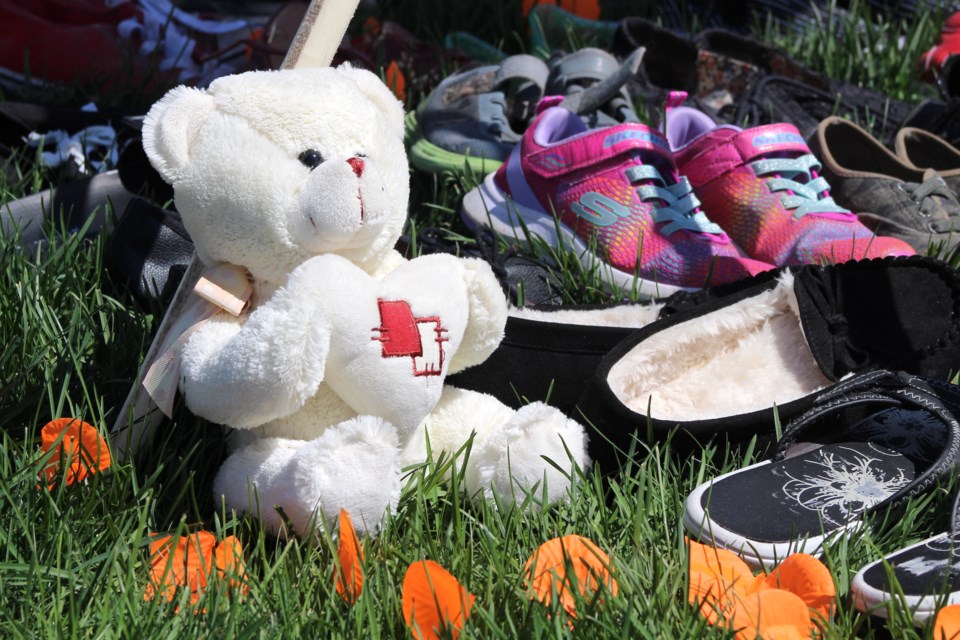KEHEWIN – Kehewin Cree Nation came together as a community to honour and remember those who attended residential school.
On Friday, June 4, students and members of the public wore orange at the Honouring Residential School Victims and Survivors Ceremony, which was organized by Tressa Gadwa after the news broke that a mass grave of 215 children was found at the Kamloops Indian Residential School.
“We decided to do something because we have some elders here in the reserve that, unfortunately, did attend a residential school and they were affected by it,” Gadwa told Lakeland This Week. “It’s not just the survivors and victims that were affected by this, it’s gone from generation to generation. There are different ways you could be affected by it, and we wanted to honour everyone that was affected by it, especially all the children that lost their lives and people that did go through it.”
A memorial that included shoes and toys was set up in honour of each soul lost in Kamloops, which attendees added to throughout the healing ceremony. It was a day to learn and remember those that were lost and who had come home forever changed as a result of a residential school.
Gadwa noted the event was also meant to be informative because “Aboriginal studies wasn’t really a thing until a few years ago.”
“Residential schools were essentially made to assimilate (us) and it was a genocide of our kind,” she stated. “It was to kill the Indian in people is what they were made for. We were fortunate enough to live through that and we’re healing from that... We’re fortunate now to have our children come to school and come home every day. Lots of children that went to residential schools never made it home.”
Guest speaker Amber Dion shared that she was the daughter of a survivor. Her father was “forcibly sent” to Blue Quills Residential School when he was only seven-years-old.
“He never told me his story, but my auntie had told me years ago that ‘there’s many things that a father cannot say to their daughters.’ But he didn’t have to tell us his story, we saw it. My dad struggled with addiction when we were kids and we could see his pain. It was clear,” she told the crowd.
Blue Quills was later turned into the University nuhelot’įne thaiyots’į nistameyimâkanak Blue Quills, which Dion attended when she went through post-secondary education in social work. There, she learned exactly what residential survivors endured and what her father had to do to survive.
Dion wrote a letter to her father when she was a student at Blue Quills as part of an assignment.
“I said to him ‘dad, keep going because one day you’re going to have a beautiful wife and a beautiful family with lots of children and great-grandchildren. For all the days you weren’t loved in that school, we’ll love you even more.’”
Kehewin Chief Vernon Watchmaker stressed the 215 found in Kamloops was just the start of uncovering what happened to Indigenous children at residential schools.
“It’s going to be continuing and we need to continue to support each other on this important journey,” he expressed.
Robynne Henry, Bonnyville Nouvelle



